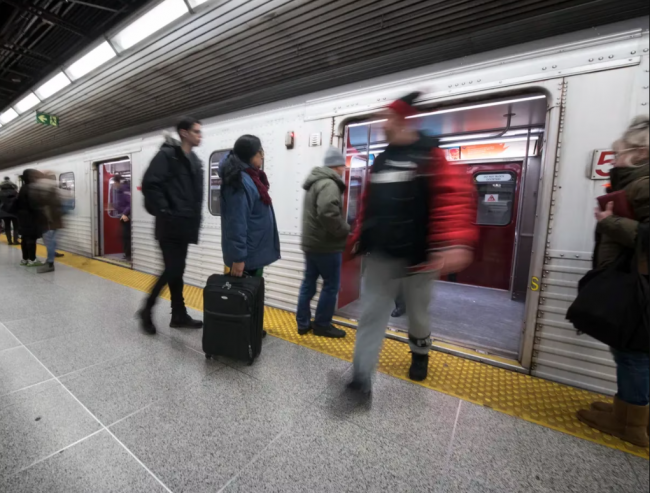Articles Menu

Website editor: This is a good piece but it should be noted that in the Vancouver area Translink is now cutting back service and proposing to raise fares
Feb. 16, 2023
Nate Wallace is the clean transportation program manager at Environmental Defence.
Public transit users in Canada’s biggest city are about to pay more money for worse service. That is a recipe for disaster.
Toronto’s proposed budget sets out a 10-cent fare hike and a service cut for the Toronto Transit Commission that would bring overall service levels down 9 per cent below where they were before the COVID-19 pandemic. The TTC has acknowledged that waits on the subway could increase up to 10 minutes outside of rush hour, with the service promising to be more crowded when the next train does arrive.
But Toronto isn’t alone. Earlier this month, citing financial difficulties, the Société de transport de Montréal announced that it would end its commitment that Montrealers wouldn’t have to wait longer than 10 minutes on many bus lines during morning and evening rush hours. Before that announcement was made, only eight STM bus lines still boasted that guarantee; it had covered 31 lines before the pandemic began.
This matters, because successful public-transit systems require the careful maintenance of a virtuous cycle. Reliable service that customers want and affordable fares increase the number of transit riders, which in turn produce more revenue that can be used to further improve service. But these latest service cuts take aim at the frequent bus networks and off-peak service hours that experts say we should be investing in, to adjust to today’s travel patterns and to deliver quality service to the users who need transit the most: those with lower incomes, racialized people and women.
Good, reliable service is the key to bringing back transit riders; instead, with public-transit systems in a fragile state, many Canadian cities are choosing to launch a vicious death spiral, in which diminished service and higher costs chase riders and revenue away, leading to further cuts. This spiral will also push people into their cars, and lead to a less equitable and more carbon-intensive future.
Policy-makers across all levels of government have proven that they understand this dynamic. In 2020, Ottawa worked with the provinces to deliver emergency operating support to public transit systems through the Safe Restart Agreement; it renewed its support last February. That funding has run out, however, and ridership remains far below pre-pandemic levels. With no more support on the horizon, public-transit systems are being forced to enact service cuts. But if we want to tackle the climate crisis, we don’t just need to save public transit from its current budget woes – we need to rapidly increase transit service levels.
Metro Vancouver’s transit system, TransLink, has an ambitious plan to do it. Its latest 10-year strategy promises to more than double bus service levels and add nine new Bus Rapid Transit lines. Other cities should match this vision, but doing so will require operating funding.
The federal government wants things to go back to where they were before the pandemic, when it only invested in transit capital – that is, the procuring and building of new transit infrastructure. Ottawa is, to its credit, doing this in earnest: Cities across the country are enjoying historic investments in light rail and subway projects, while significantly increasing the size of bus fleets. But the federal government would also like to stop funding transit operations, which involves ensuring staffing levels are capable of putting that new infrastructure in service for the public.
This approach – funding capital projects, but not operations – is like having a health care strategy that only builds hospitals and buys ambulances without spending on doctors, nurses and paramedics.
During the pandemic, we saw a “Team Canada” approach in which all orders of government seemed to set aside their differences to work together. That has now given way to business-as-usual – bickering over funding responsibilities while real people’s daily lives and the future of our planet hang in the balance.
The federal government should stop playing games and force all levels of government to the table to hammer out a permanent funding agreement for public-transit operations. That would be a bold opportunity to fix perennial problems and set transit systems on a growth path – one that would be consistent with our climate ambitions, too.
[Top photo: Toronto isn't alone among Canadian cities looking to increase transit fares this year.FRED LUM]